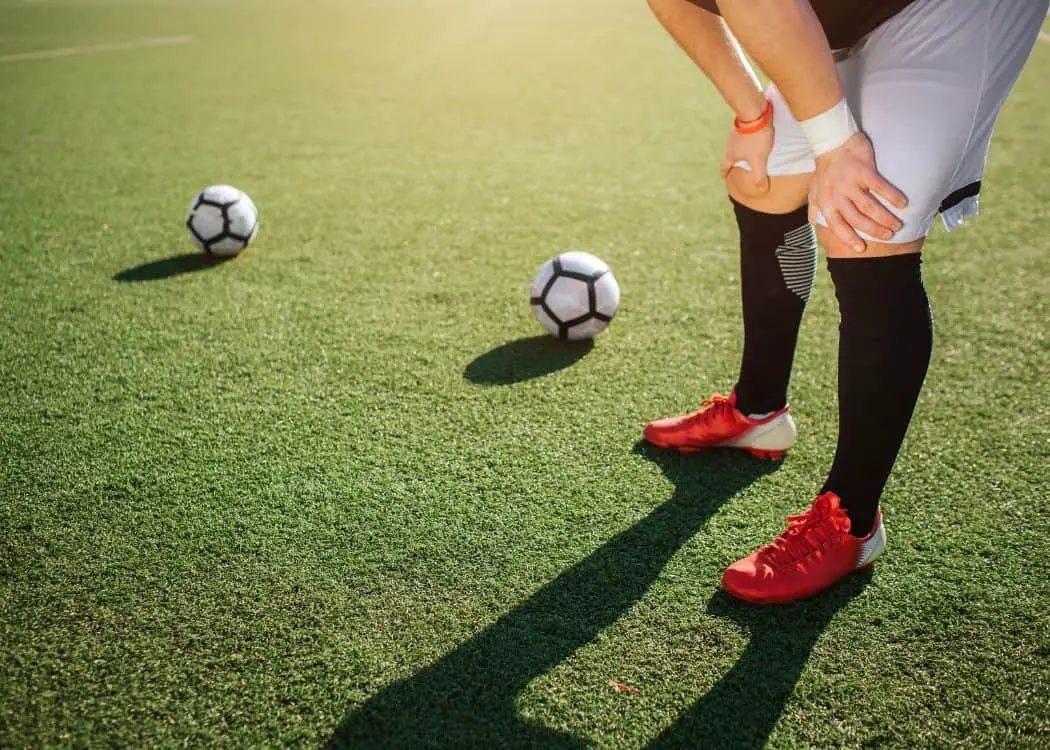Table of Contents
**This page contains affiliate links and I will be compensated if you make a purchase after clicking on my links**
Compression socks resemble knee socks. Very much, not fashionable. However, they are designed to increase blood circulation from your feet and ankle extremities, back to the rest of your body.
Different socks generate different amounts of compression. Lighter versions generate around 15-20 mmHg of pressure, and heavier versions provide around 20-30 mmHg (or higher) pressure.
The heavier versions are intended only for medical use, such as treatment of venous and lymphatic diseases, and will be prescribed by your doctor. As always, follow the guidance of a healthcare professional.
This post will focus on the lighter version, which can be used by anyone.
Compress legwear may come as socks, that end below the knee, or compression stockings or tights, that cover your entire leg.
They work by providing gentle pressure around your feet and ankles that gradually reduces towards the top of the sock. This gradient of pressure is important; simply wearing “tight socks” has no benefit and may even make things worse.
They should feel tight, but never painful.
Likewise, if you have peripheral neuropathy (nerve damage in your feet) or skin sensitivities to certain fabrics, avoid compression socks, unless you discuss it first with your doctor.
Can you wear them to bed?
There’s nothing wrong with wearing light compression socks to bed. However, (unless they are worn for a medical reason) any benefit will be minimal
Like any sock worn to bed, they will offer a touch of extra warmth.
Sedentary or active? Improve your circulation
When we sit or stand, the blood in our feet needs to fight gravity to circulate back to our heart. For healthy individuals, this isn’t an issue.
However, if you find yourself sitting hours in front of a computer screen, with your feet planted on the floor—in an ergonomically-approved way—then you may find compression socks improve your comfort.
Likewise, if you have a job where you stand all day.
Or you’re pregnant, and susceptible to leg and ankle swelling. Not to mention, fatigue, and varicose veins.

They can also help orthostatic hypotension, that lightheadedness you feel when you stand up too quickly because you’re not getting enough blood to your brain.
Are you planning a long flight to Australia? In coach? Bring along a pair of compression socks to improve your comfort, and decrease your risk of deep vein thrombosis, or DVT.
Although it’s a rare occurrence, blood clots that form in your legs can become deadly if they dislodge and move somewhere critical, like your lungs.
(Also, make sure you get up during your flight and walk around, and sit with your legs raised whenever possible.)
In addition to reducing your DVT risk, compression socks will improve your comfort on long flights:
- In a 2008 study (in Australia) by Hagan, et. al. travelers wore 4-20 mmHg compression tights during long flights. Compared to no tights, they had significantly less ankle swelling and reported less pain, discomfort, more energy, and better post-flight sleep.
Some of the self-reported benefits could simply be a placebo effect: if you think it will work, then it actually works. But as the cost of compression socks is reasonable, it may not matter.
Compression socks aren’t just for those who sit or stand for long periods. If you are at risk for spider and varicose veins in your legs, compression socks may help. They should help prevent blood pooling in your legs.
Many athletes swear by both compression socks and sleeves both during and after exercise.
Post-exercise, improved circulation should help alleviate muscle aches and pains, and hasten recovery.
- In a small 2019 study by Brophy-Williams, et. al. twelve male runners wore compression socks or not (the controls) during a 5 km time trial. After a one-hour recovery, they ran a second 5 km time trial without the socks. Those that wore the compression socks during the first run, ran the second run an average of 9.6 seconds faster than that of the control runners. This difference was statistically significant.
The authors don’t know why the socks had this effect but hypothesize that it may be due to “improved oxygen delivery, reduced muscle oscillation, superior running mechanics and athlete beliefs.”
Note that “athletic beliefs” are another form of the placebo effect.
Wearing socks to bed
In bed, our feet and heart are on the same level. Our circulatory system is not fighting gravity as it is during the day when we’re sitting or standing.
In addition, when we sleep our core body temperature drops. This happens by increasing circulation to our extremities.
Wearing compression socks at night may be a bit redundant. It’s usually best to simply save your compression socks for day-use only.
However, if you feel better, then go for it.
First photo credit: ©Unknown via Canva.com
[If you experience issues with menus or links not working, it is most likely due to your Ad blocker.]

